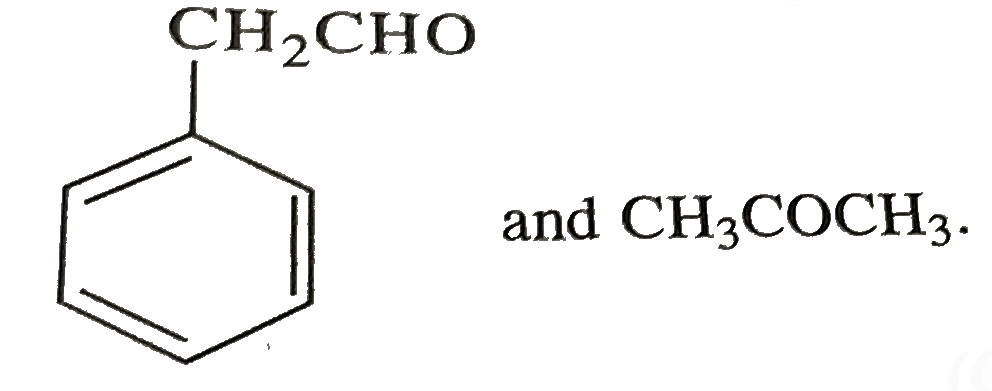Give a simple test to distinguish between :
(i) Benzaldehyde and acetophenone.
To distinguish between benzaldehyde and acetophenone, we can use the Iodoform test. Here's a step-by-step solution:
Step 1: Understand the Compounds
- Benzaldehyde (C6H5CHO): It is an aromatic aldehyde and does not contain a methyl ketone group.
- Acetophenone (C6H5COCH3): It is an aromatic ketone that contains the methyl ketone group (CH3CO).
Step 2: Conduct the Iodoform Test
- The Iodoform test is used to detect the presence of a methyl ketone (CH3CO group) in a compound.
- To perform the test, take a small amount of the compound (benzaldehyde or acetophenone) and mix it with sodium hypochlorite (NaOCl) in the presence of sodium hydroxide (NaOH).
Step 3: Observe the Reaction
- For Acetophenone:
- When acetophenone is treated with sodium hypochlorite and sodium hydroxide, it will react to form iodoform (CHI3) and a sodium salt of a carboxylic acid.
- The formation of a yellow precipitate indicates a positive result for the Iodoform test.
- For Benzaldehyde:
- When benzaldehyde is treated under the same conditions, there will be no reaction that produces iodoform.
- Therefore, no yellow precipitate will form, indicating a negative result for the Iodoform test.
Step 4: Conclusion
- The presence of a yellow precipitate confirms the presence of the methyl ketone group in acetophenone.
- The absence of a yellow precipitate indicates that benzaldehyde does not have the methyl ketone group.
Final Result
- Acetophenone gives a positive Iodoform test (yellow precipitate).
- Benzaldehyde gives a negative Iodoform test (no yellow precipitate).
- Benzaldehyde (C6H5CHO): It is an aromatic aldehyde and does not contain a methyl ketone group.
- Acetophenone (C6H5COCH3): It is an aromatic ketone that contains the methyl ketone group (CH3CO).
- The Iodoform test is used to detect the presence of a methyl ketone (CH3CO group) in a compound.
- To perform the test, take a small amount of the compound (benzaldehyde or acetophenone) and mix it with sodium hypochlorite (NaOCl) in the presence of sodium hydroxide (NaOH).
- For Acetophenone:
- When acetophenone is treated with sodium hypochlorite and sodium hydroxide, it will react to form iodoform (CHI3) and a sodium salt of a carboxylic acid.
- The formation of a yellow precipitate indicates a positive result for the Iodoform test.
- For Benzaldehyde:
- When benzaldehyde is treated under the same conditions, there will be no reaction that produces iodoform.
- Therefore, no yellow precipitate will form, indicating a negative result for the Iodoform test.
- The presence of a yellow precipitate confirms the presence of the methyl ketone group in acetophenone.
- The absence of a yellow precipitate indicates that benzaldehyde does not have the methyl ketone group.
- Acetophenone gives a positive Iodoform test (yellow precipitate).
- Benzaldehyde gives a negative Iodoform test (no yellow precipitate).
Similar Questions
Write test to distinguish between

View SolutionGive chemical test to distinguish between

View SolutionA test cross distinguishes between :
View SolutionGive one chemical test to distinguish between acetaldehyde and acetone.
View SolutionGive one good chemical test to distinguish between benzaldehyde and acetone.
View SolutionGive one test to distinguish between acetaldehyde and formaldehyde.
View SolutionGive chemical tests to distinguish between:
acetaldehyde and benzaldehyde
View SolutionGive two chemical tests to distinguish between benzaldehyde and benzoic acid.
View SolutionGive a test to distinguish between aldehyde and ketone.
View SolutionGive chemical tests to distinguish between:
acetaldehyde and benzaldehyde
View Solution
